10 Ducks with Brown Heads (With Pictures)
Across lakes, rivers, and marshes around the world, ducks show off an incredible palette of colors — from glossy greens and deep blues to soft grays. Among these, ducks with brown heads have a subtle charm that’s easy to miss at first but impossible to forget once spotted. Their warm, earthy tones blend beautifully with reeds, mud, and the reflections on the water, making them masters of both camouflage and elegance. The muted head colors also give hints about age, breeding readiness, or species identity — and it gives birdwatchers a helpful clue for spotting and identifying the ducks.
In this guide, we’ll explore some of the world’s most striking ducks with brown heads — sleek common merganser to the elegant cinnamon teal — and learn what makes each of them so fascinating to watch.
1. Redhead
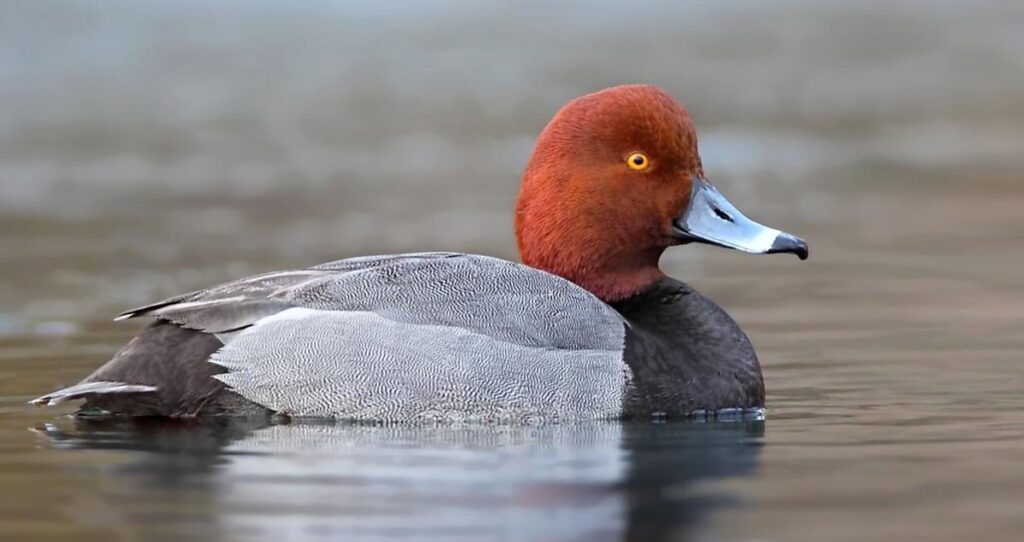
The redhead is a North American diving duck that truly lives up to its name. The male’s head shines with reddish-brown color, especially bright during breeding season. Its body is mostly gray with a black chest and a pale blue bill that looks striking against that warm head color. Redheads are expert divers and spend much of their time underwater searching for plants and small creatures to eat. They’re often seen floating in big groups on open lakes and bays, where their glowing heads are easy to spot from a distance.
2. Eurasian Wigeon
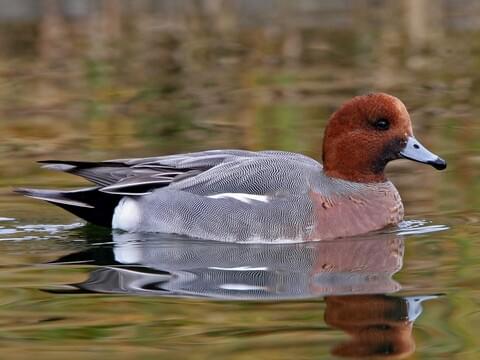
The Eurasian wigeon is a graceful duck easily recognized by the male’s warm reddish-brown head topped with a soft creamy-yellow crown that looks like a painted stripe. The female, on the other hand, wears a more modest mix of soft browns for better camouflage. You’ll often see wigeons grazing together on grassy shorelines or dabbling in shallow waters. When they fly, their white wing patches flash in the sunlight, making them a beautiful sight for any birdwatcher.
3. Ferruginous Duck
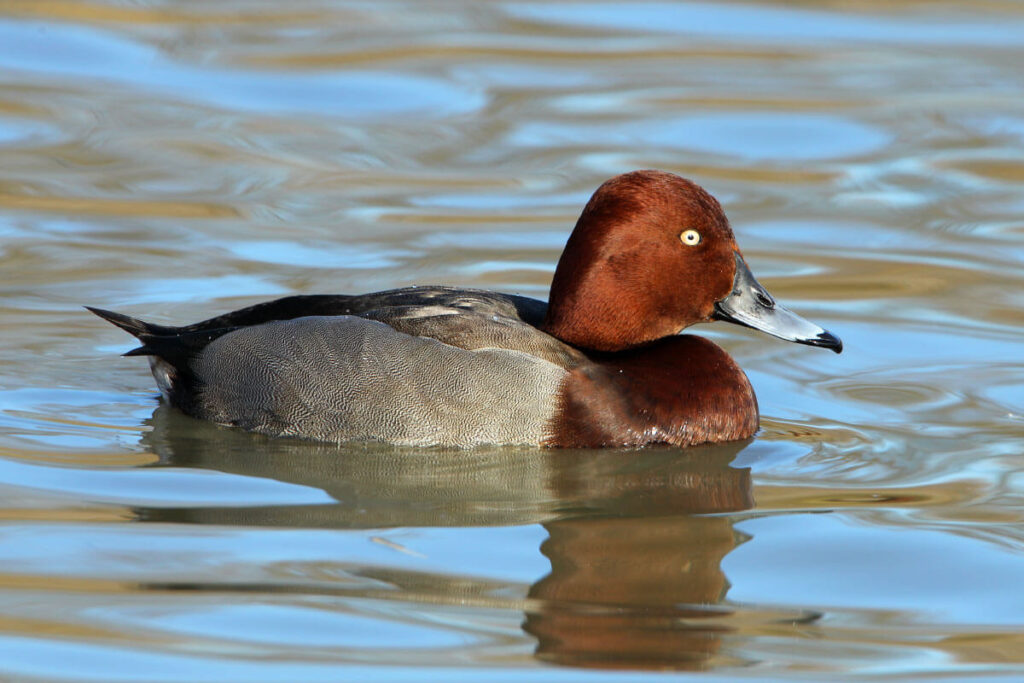
The ferruginous duck is smaller but every bit as striking. The male’s head and chest are a deep chocolate-brown, smooth and glossy like polished wood, and his bright yellow eyes really pop against that dark color. When they fly, the white patch under their wings flashes like a signal light. These ducks prefer quiet freshwater lakes or ponds with lots of plants to hide and feed among. They’re shy birds, so spotting one feels like a reward for patient birdwatchers. Sadly, in some areas, their numbers are shrinking due to wetland loss — making every sighting even more special.
4. Common Merganser
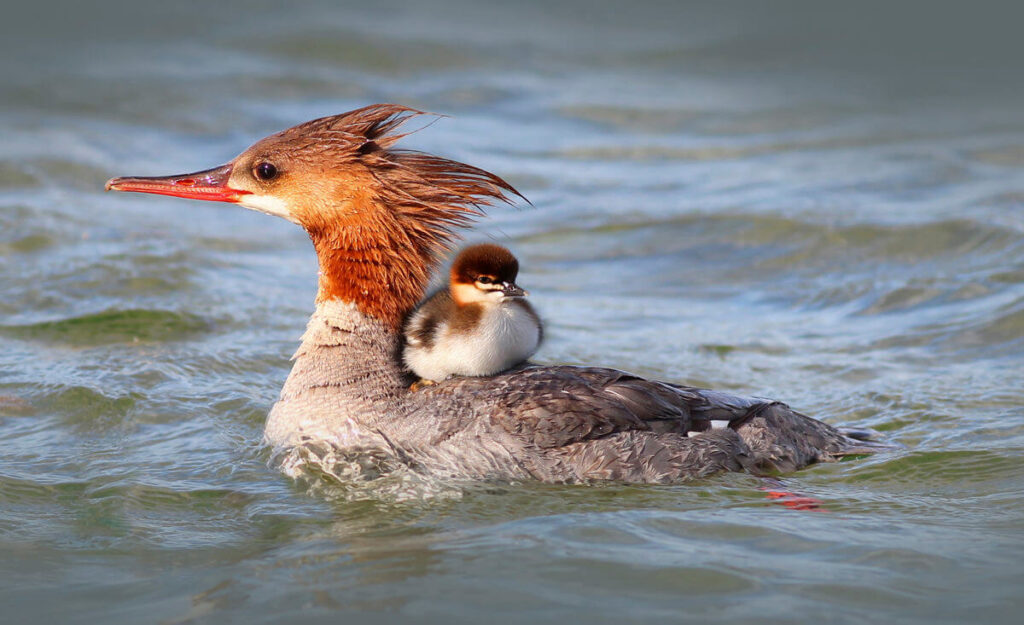
The common merganser — or goosander, as it’s called in Europe — is an elegant, fish-eating duck that often patrols rivers and forest lakes. The female has a warm brown head with a feathery crest that looks a bit like a windblown hairstyle, while the male’s head is dark green that can appear orange-tinged in sunlight. They’re fast swimmers and expert divers, using their sharp bills to catch fish under the surface. You might see families of mergansers gliding along in a line, ducklings hitching rides on their mother’s back or paddling right behind her — a charming sight for any birdwatcher.
5. Common Pochard
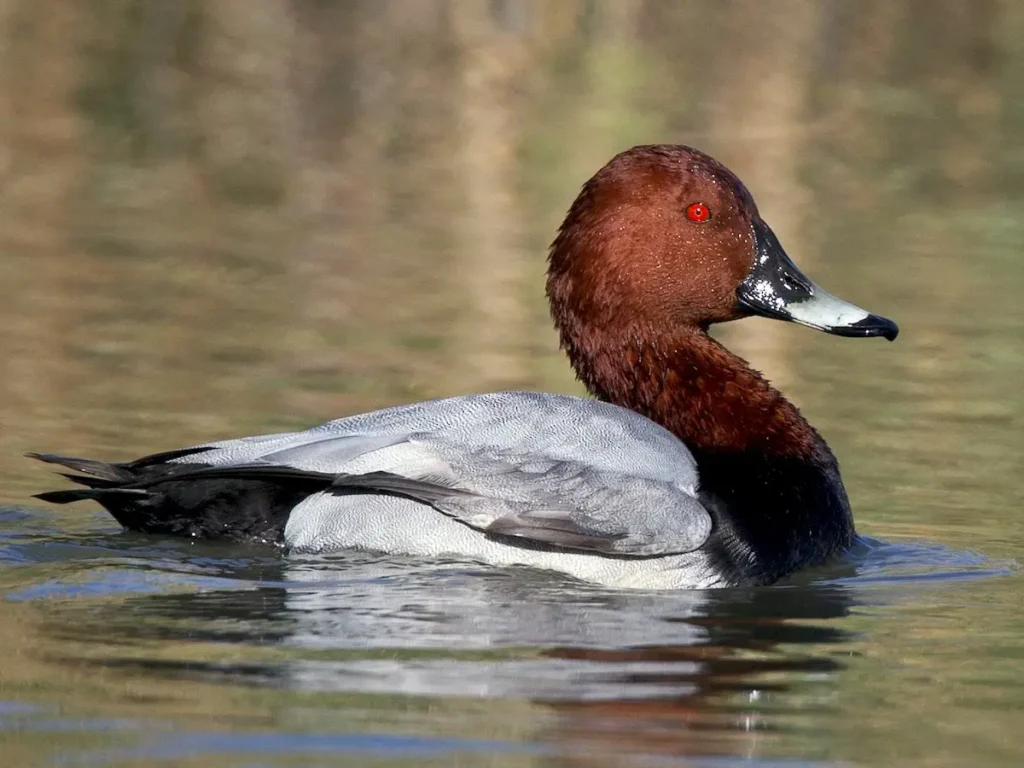
The common pochard is a handsome diving duck with a rich brown head head that glows beautifully in the sunlight. The male has a chestnut-colored head and neck, a black breast, and a pale gray body — a striking mix that makes him easy to recognize on the water. His sloping forehead and long bill give him a sleek look, while his red eyes seem to shine even brighter during breeding season. The female is more softly colored, with shades of brown and gray, helping her blend in while nesting. You’ll often see these ducks diving in calm lakes and ponds, searching underwater for plants and small animals. They like to gather in groups, especially in winter, when large flocks rest and feed together.
6. Cinnamon Teal
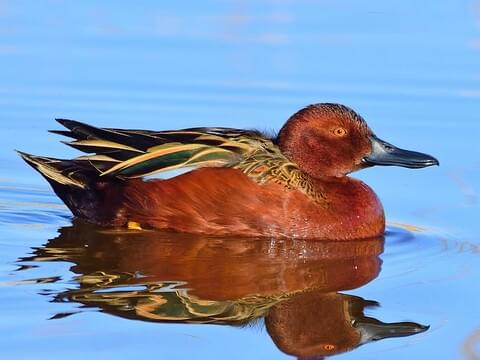
The cinnamon teal is one of the brightest ducks you’ll ever spot —the male has a warm brown head that blends into his reddish body, making him easy to spot. His red eyes and dark bill add to the bold look. Females, on the other hand, wear softer brown feathers that help them stay hidden among reeds. These ducks are common in marshes and shallow ponds, where they skim the water’s surface for seeds, plants, and tiny insects. Unlike many other ducks, cinnamon teals are pretty quiet — you’ll mostly hear soft quacks from females or gentle whistles from the males. Watch closely during nesting season, and you might see males standing guard while females nap in cozy huddles.
7. Fulvous Whistling Duck
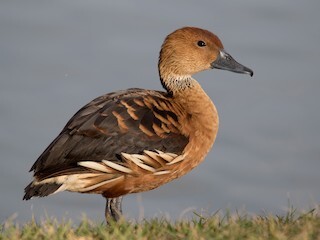
The fulvous whistling duck has a warm brown body that gives it a glowing look in the sun. Its long neck and legs make it stand taller than most ducks, and it gets its name from the cheerful whistling sound it makes when flying or calling. These ducks live in wetlands and rice fields, where they feed on seeds, grains, and plants. They often move in pairs or groups, staying close together while feeding or resting. Both parents care for their ducklings, taking turns incubating the eggs and leading the little ones through the water after hatching. Watching a group of them march across a pond with their soft whistling calls is a real delight.
8. Canvasback
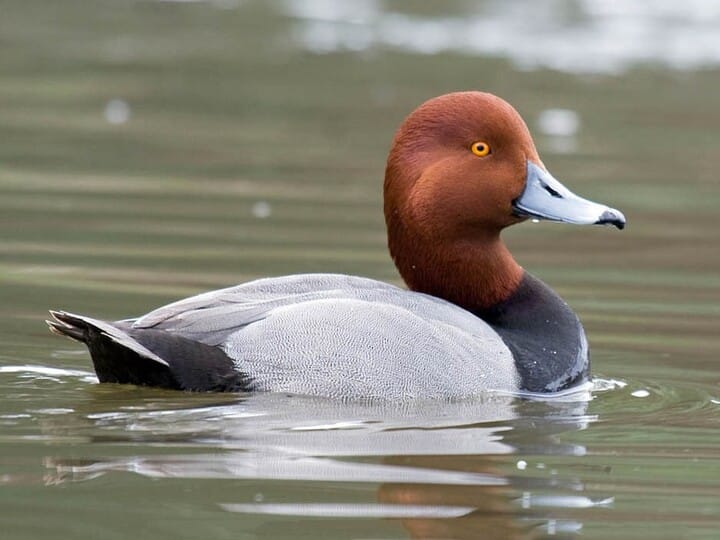
The canvasback is one of North America’s largest diving ducks, and the female has a beautiful, soft brown head that gradually darkens toward her chest. Her grayish-brown body and sloping, wedge-shaped head give her a sleek, elegant appearance on the water. These ducks are excellent divers, often seen gliding across lakes and ponds before disappearing underwater to feed on aquatic plants and small invertebrates. Female canvasbacks are usually more secretive than males, blending into marshy shorelines, but their calm, gliding movements make them a pleasure to watch.
9. Northern Pintail
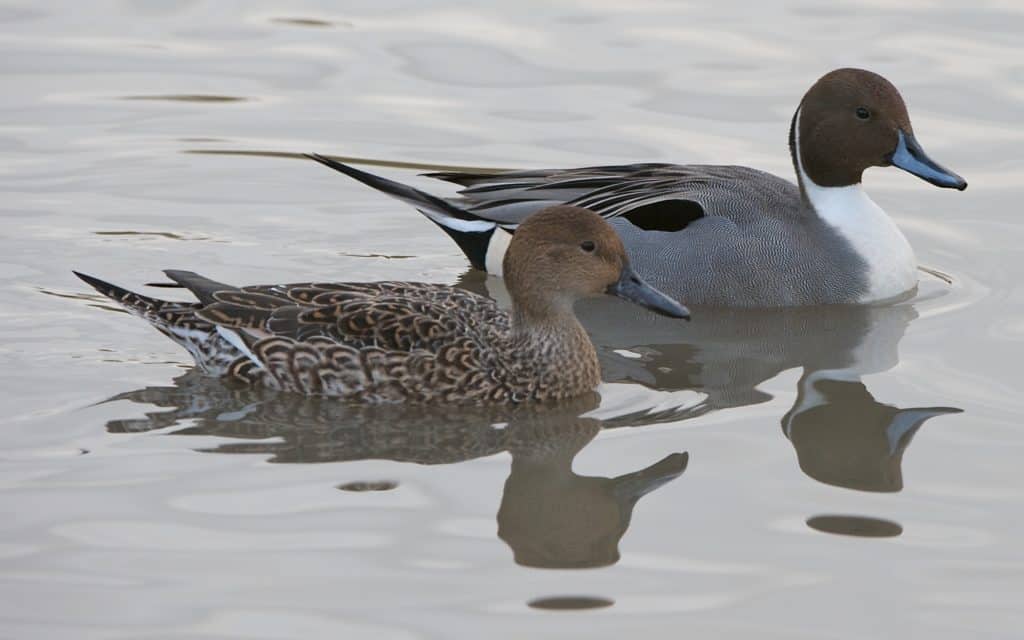
The female northern pintail is a graceful duck with a gentle brown head and warm brown body feathers that help her stay camouflaged in open wetlands and marshes. Unlike the striking male with his long tail feathers and bold markings, the female’s coloring keeps her hidden while nesting or feeding. She has a slender, elegant neck and a streamlined body that allows her to move quickly through water as she searches for seeds, aquatic plants, and small insects. Northern pintails are social ducks, often seen in small groups or mingling with other dabbling species outside of the breeding season.
10. Female Smew
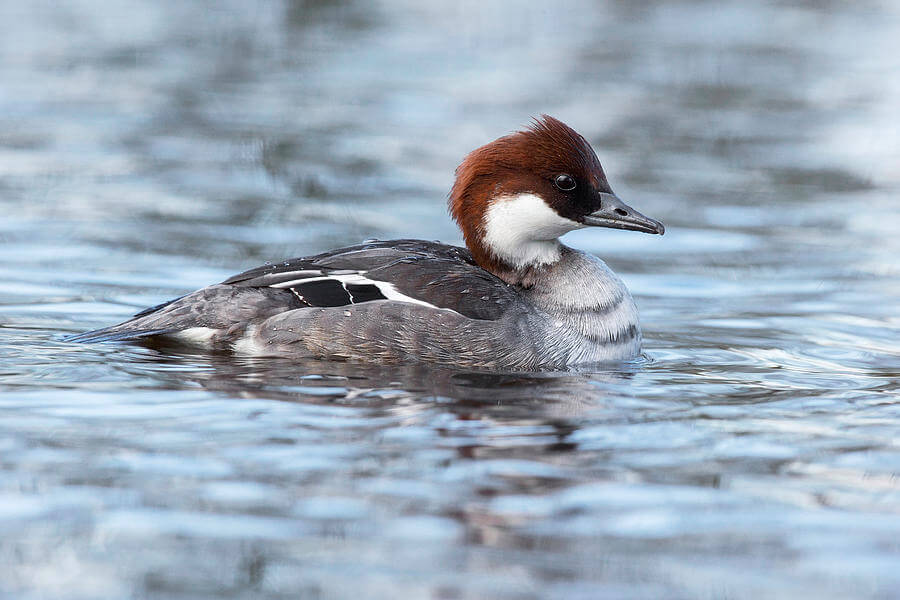
The female smew is a smaller diving duck with a soft gray body and a rich chestnut-brown head, complemented by a white chin and cheeks. Known as the “redhead” smew, she stands out among flocks of ducks when floating on calm lakes or rivers. These little divers use their hooked, serrated bills to catch fish, often plunging completely underwater for their meals. Females and young males look similar until the males mature, and both show charming, graceful movements as they swim or take off in flight.
